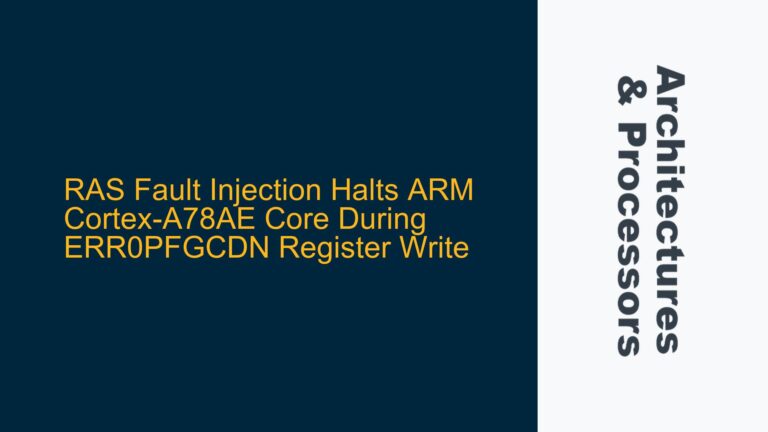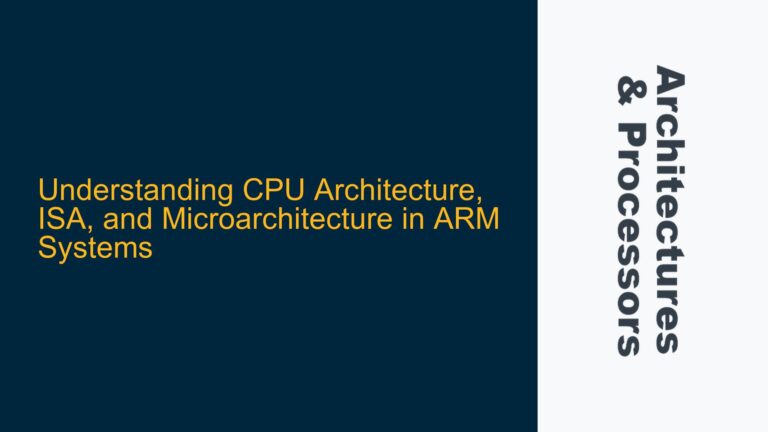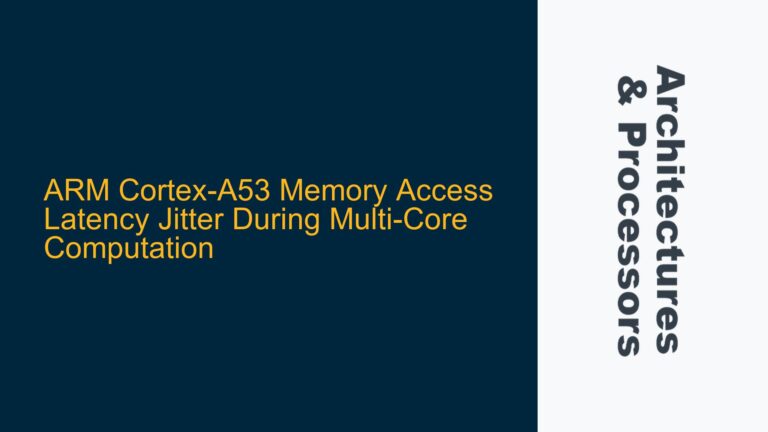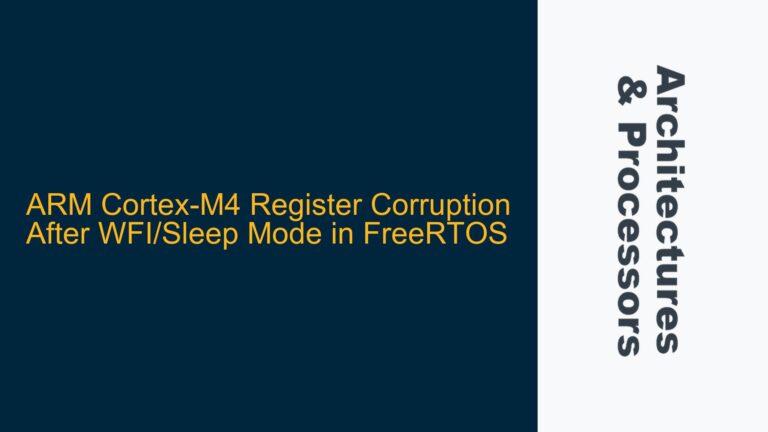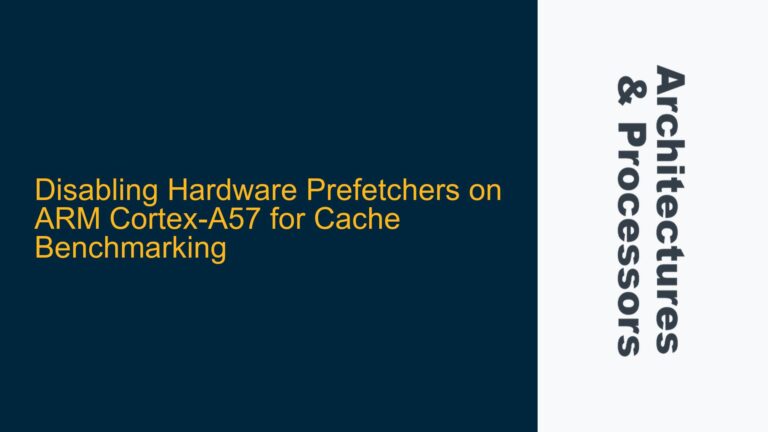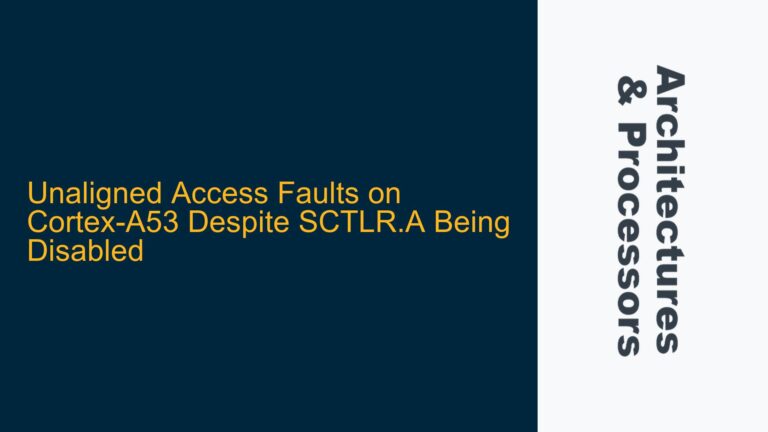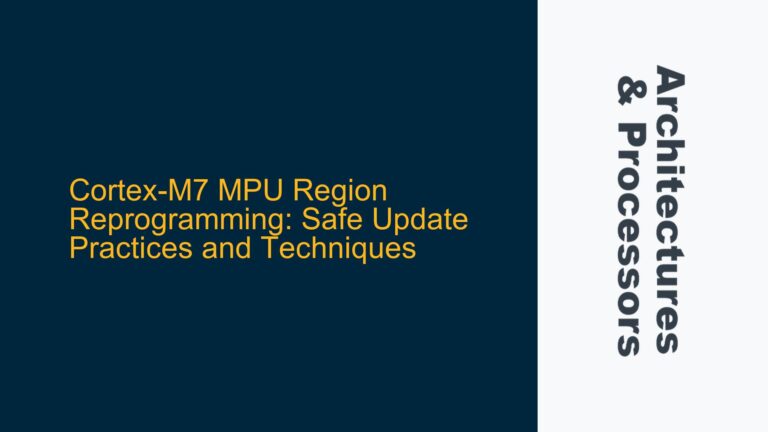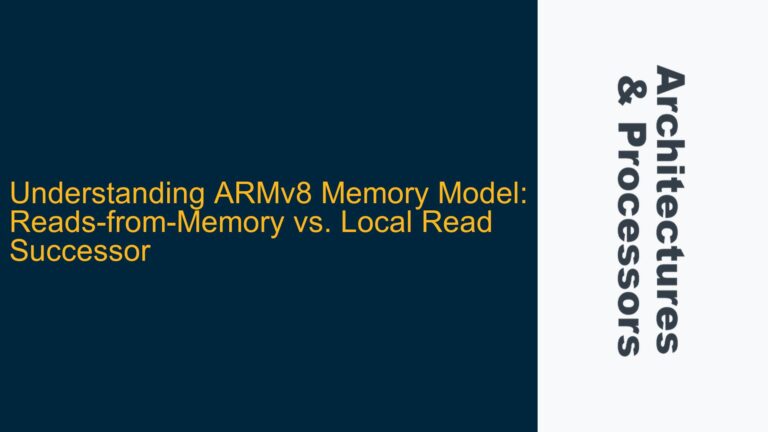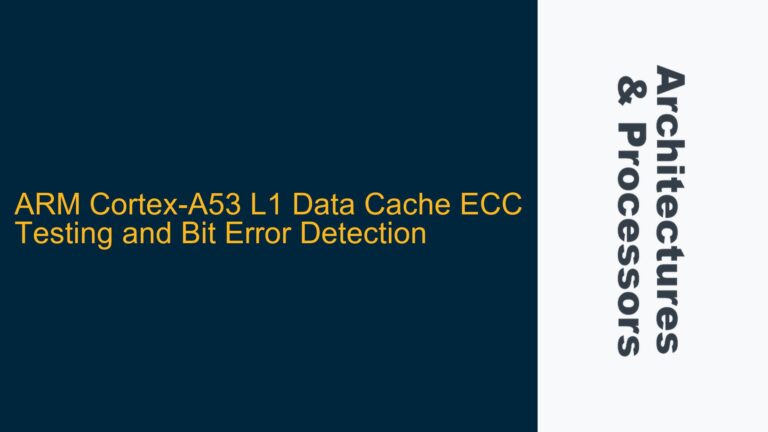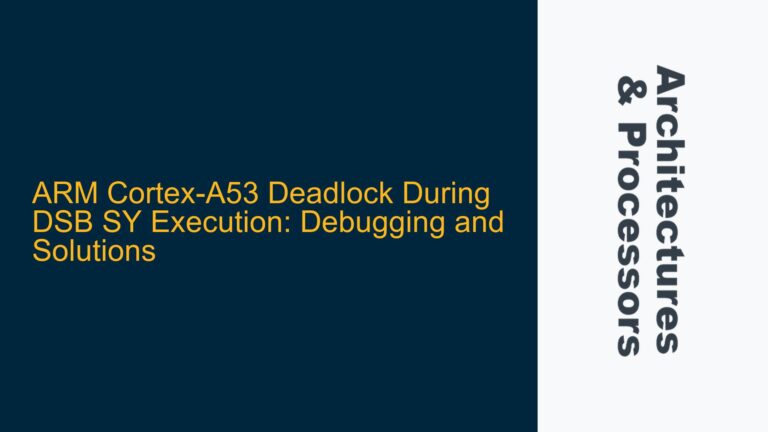RAS Fault Injection Halts ARM Cortex-A78AE Core During ERR0PFGCDN Register Write
ARM Cortex-A78AE Core Halts During ERR0PFGCDN Register Configuration The ARM Cortex-A78AE core is designed with Reliability, Availability, and Serviceability (RAS) features to enhance fault tolerance and error handling in safety-critical applications. One of the key components of the RAS framework is the ability to inject faults for testing and validation purposes. However, during the configuration…
